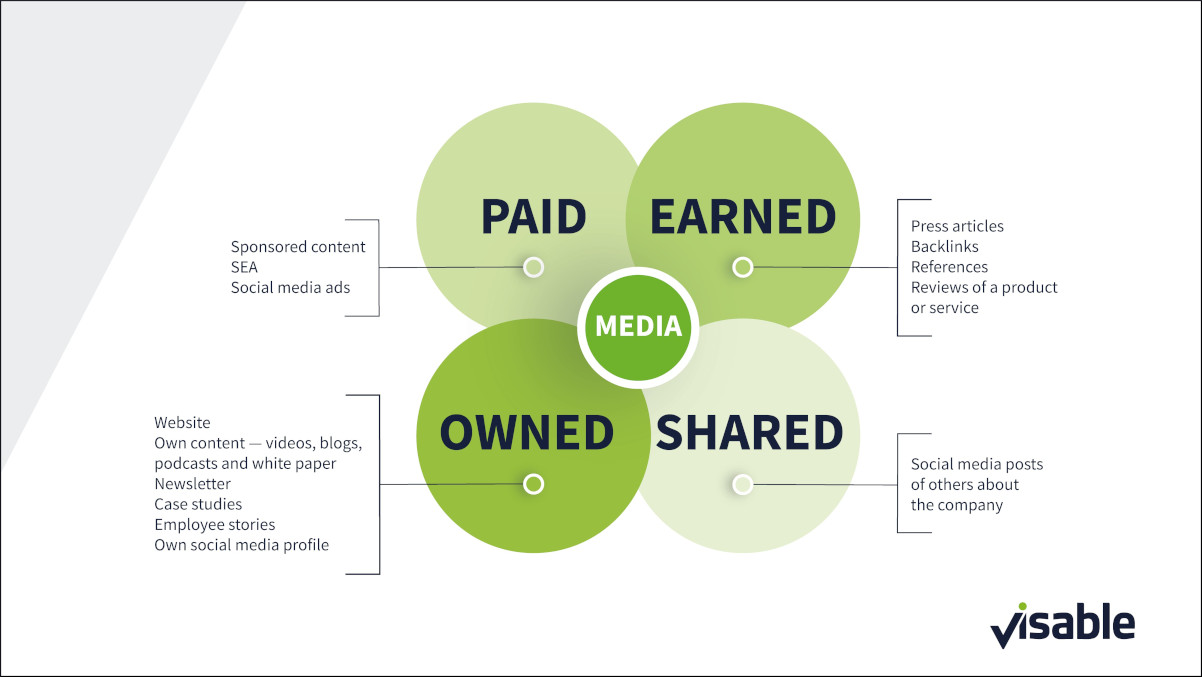With the use of the PESO model, it becomes clear why it’s important for advertisers to differentiate between paid, owned, earned and shared media. This article shows what the various individual types of media channel are all about and how these are intertwined with one another.

What does PESO and the model stand for?
PESO is the abbreviation for paid, earned, shared and owned media. The PESO model illustrates the distribution possibilities of digital content and how the four media channel types are intertwined with one another. With the help of this model, strategic decisions can be taken on how the marketing budget should be allocated to the respective channel types. The four types differ in the following way:
- Paid media: Here is where external media channels can be used to publish content for a fee. This includes, for instance, social media campaigns or search engine advertising (SEA). It’s well suited for gaining reach among currently uncaptured target groups. The trustworthiness of the content is, however, not particularly high.
- Earned media: The form of content is produced by third parties, and the advertiser does not have any influence on this. The content may include press articles, reviews of a product or service, or backlinks that reinforce the relevance of the content. Earned media is highly credible, but it can lead to negative articles too.
- Shared media: Also known as social media, shared media unifies all content centred round the advertising company which is published on social sites. This content, too, can be user-generated, in other words created by third parties. The organic reach of posts is normally limited. Thanks to viral effects, however, the reach increase enormously – both positively and negatively (shitstorm).
- Owned media: This includes all content created by the company itself and published on the website, in the newsletter, on social media profiles or on other channels. The advertiser has complete decision-making freedom in this case. The content is long-lasting, yet the effort needed to build up an ongoing readership is high.

Use of PESO channel types in a way that makes sense
As mentioned above at the start of this article, these channels cannot be seen separate from one another – but instead should be combined with one another. The sole concentration on owned media normally does not lead to the traffic needed to build up a brand based on content. With the help of paid media, owned media, in contrast, can help you achieve a high reach. Likewise, paid media efforts will not conjure up desirable results when the basic content (owned media) is not relevant. Shared and earned media come about on their own if the owned and paid media channels are successful.
An example: A company publishes a high-quality specialist blog article on their own website and advertises this article via an ad on the professional network LinkedIn. This means the owned and paid media channels are already activated. If this article piques interest based on its relevance, it is also shared in the social networks in the best-case scenario. Thanks to its high distribution, the content is picked up by a specialist magazine and an interview on the blog topic is requested, giving the company a chance to explain more. As a result, all four PESO points are covered by just one content piece.

